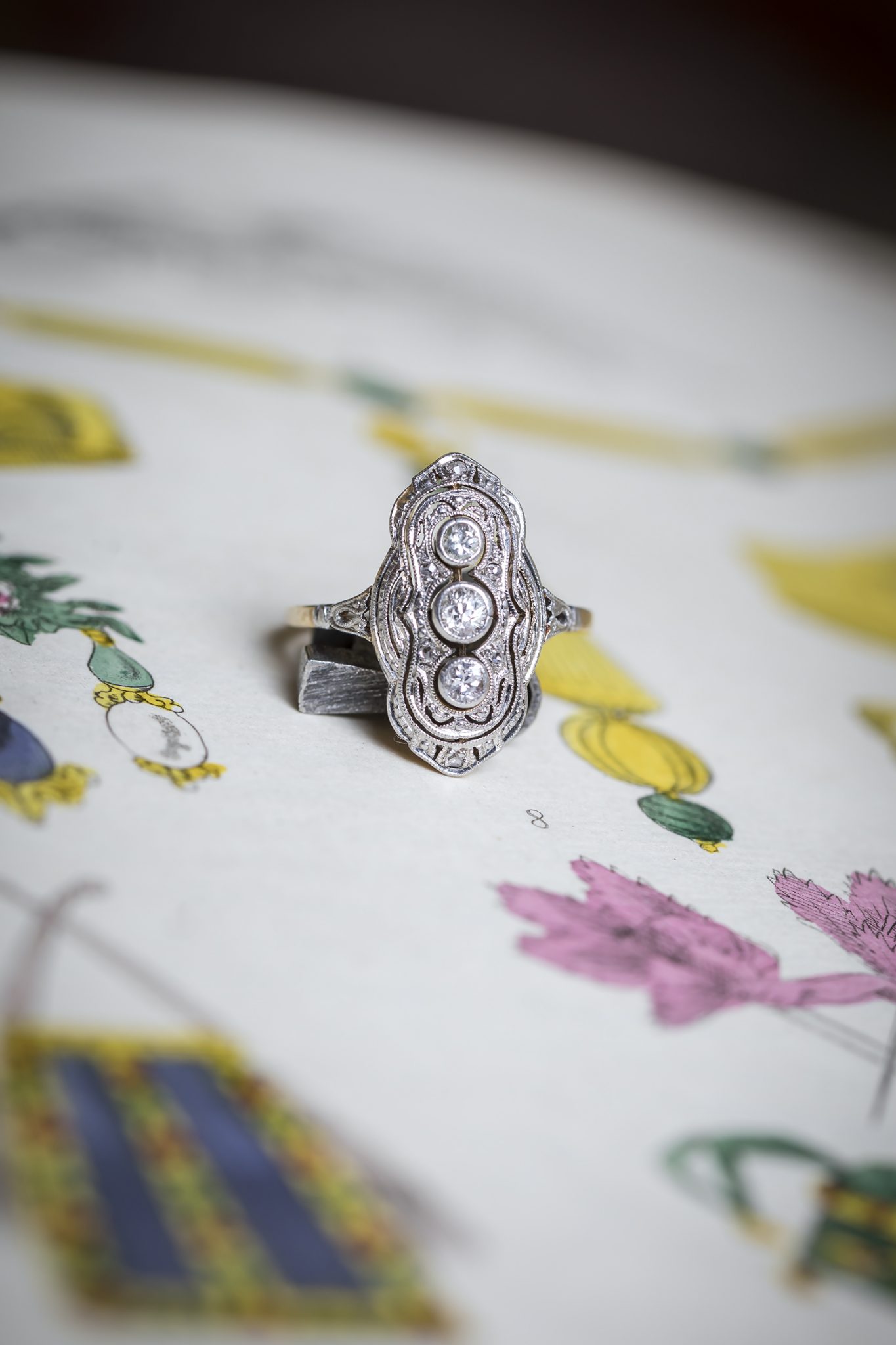Victorian snake ring set with a old mine cushion cut diamond of approximately 0.18ct H/VS.
Health, wisdom, eternity, everlasting love or venomous prowess? The serpent has had many meanings and long been a powerful symbol. Mother nature have been inspiring designers since the beginning. And no wonder.
Ladies of the European nobility wore snakes as brooches, bracelets, necklaces and finger rings. By the beginning of the 19th century long snake collars were being worn. Queen Victoria was given a snake ring by her fiancé Albert to mark their engagement.
The serpent wound its way through the 19th century jewelry as an amulet, a talisman, as a good luck charm and symbol of enduring love.
Gross weight aprox 9.1grams
Ring size us 8, 18mm, eur 56 ½, uk Q
Hallmarked BHL for Barnet Henry Joseph and a full British Hallmark confirming that it is made from solid 18ct Gold assay office Birmingham 1885
About the maker:
BARNET HENRY JOSEPH (1837 – 1907)
Barnet Henry Joseph was born in Penzance, England in 1837. His father was Henry Joseph & his mother was Amelia Emily Joseph. Barnet married Isabelle Blanckensee, who was the daughter of the well known jeweler Solomon Blanckensee and Julia Joseph.
In 1865 B. H. Joseph & Co manufacturing and wholesale jewlers was founded by Barnet Henry Joseph and his brother Henry Joseph in the heart of the Birmingham Jewelry Quarter.
The company was noted for exacting standards and a very strict quality control system which ensured that only high quality products were released onto the market. The slightest flaw would prevent items from making the journey to their retail showrooms.
In 1878 they opened showrooms in London, they became hugely successful and started supplying Liberty & Co. with some of their most enchanting Arts & Crafts pieces.
By the late Victorian era (1889) the company was said to be one of the most prominent manufacturing jewelers employing over 250 men. A few years (1891) later the business expanded overseas. An office was opened in Madrid, Spain.
In 1929 the firm was incorporated with Payton, Pepper & Sons Ltd.





















